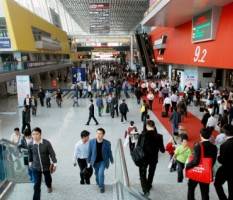May 4, 2013
Seven thoughts on the UK facilities management association merger
 With breathless excitement a press release announces the proposed merger of all of the UK’s major facilities management and support services trade associations, or rather notes that they: “have agreed to the concept of forming one single and united body to represent facilities management and support services.” With a sense of crushing inevitability the first step has been to form a steering group to address how these and other organisations could come together into this single body to meet the needs of the industry and the professionals that work within it. With this in mind, I proffer a few pieces of advice in the form of seven thoughts for those involved in these discussions.
With breathless excitement a press release announces the proposed merger of all of the UK’s major facilities management and support services trade associations, or rather notes that they: “have agreed to the concept of forming one single and united body to represent facilities management and support services.” With a sense of crushing inevitability the first step has been to form a steering group to address how these and other organisations could come together into this single body to meet the needs of the industry and the professionals that work within it. With this in mind, I proffer a few pieces of advice in the form of seven thoughts for those involved in these discussions.

























May 6, 2013
Office design goes to the movies. Part 9: BladeRunner
by Mark Eltringham • Comment, Workplace design
[embedplusvideo height=”146″ width=”210″ standard=”https://www.youtube.com/v/yWPyRSURYFQ?fs=1″ vars=”ytid=yWPyRSURYFQ&width=210&height=146&start=&stop=132&rs=w&hd=0&autoplay=0&react=1&chapters=¬es=” id=”ep3143″ /]
Ridley Scott was one of the pioneers of a film aesthetic that mashes the past with the future, the grime and the gleam. It was a pioneering idea at the time but it’s familiar now. We now accept that the future looks a lot like the past and that goes for the office design in this scene. BladeRunner is also a film about dreams. The dreamy setting here is a telling contrast to the dirt and sleaze in the City below and the scene in the office in which Deckard (Harrison Ford) interviews the classic femme fatale Rachel (Sean Young) also supports the unresolved notion that Deckard may be a replicant himself. Clearly the workplace smoking ban had been repealed by this time, but then where would a femme fatale be without a cigarette? Even if she is an android.